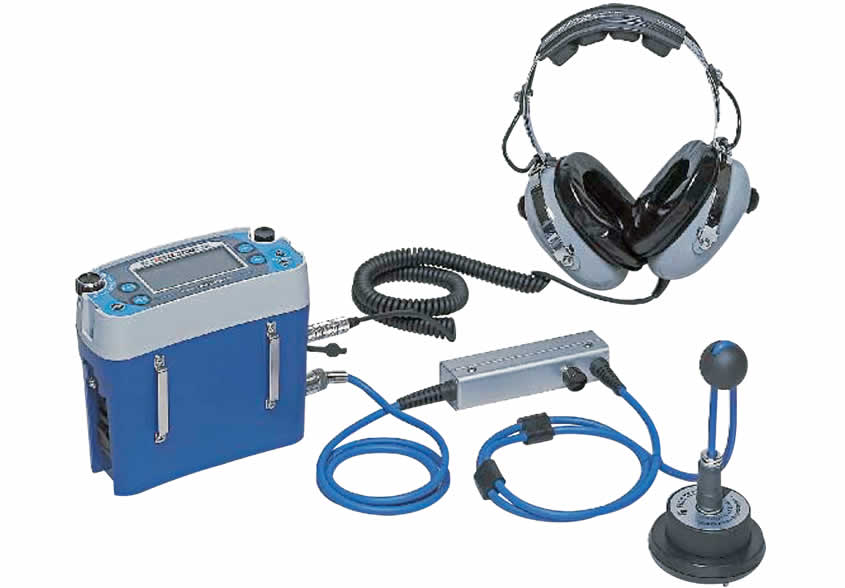Leading Water Leak Detection Techniques to Safeguard Your Building from Water Damage
Cutting-edge Solutions for Very Early Detection of Water Leakages in Structures and Facilities
As the stability of structures and facilities is vital, the challenge of very early discovery of water leakages has actually stimulated innovative solutions that guarantee to revolutionize the means we secure versus potential problems. From sophisticated leakage discovery innovations to the release of IoT sensors for real-time surveillance, the landscape of leak avoidance is evolving quickly. Artificial intelligence formulas provide a glimpse into the future of leakage forecast, while thermal imaging presents a non-intrusive technique for determining covert leakages. Automated water circulation analysis systems are reshaping exactly how leakages are identified and dealt with, leading the way for a proactive method to water leakage discovery. Each of these solutions holds the essential to making certain the reliability and longevity of our developed atmosphere, motivating a change towards a more sustainable and effective future.
Advanced Leak Detection Technologies
Advanced leak discovery technologies, equipped with sophisticated sensing units and algorithms, play a crucial function in swiftly recognizing and identifying water leakages in different setups. Electromagnetic sensors can identify adjustments in electromagnetic areas created by water, providing yet one more layer of leakage detection capacity.

IoT Sensors for Real-Time Surveillance
In the realm of modern-day water leak discovery, the assimilation of IoT sensors for real-time monitoring represents a crucial advancement in improving aggressive leakage discovery capabilities. These sensors offer continuous monitoring of water systems, supplying real-time information on water circulation prices, stress variants, and temperature level modifications. By leveraging IoT technology, these sensors can find also the tiniest abnormalities in water usage patterns, making it possible for early recognition of potential leakages before they escalate right into major problems.
IoT sensing units send data to a centralized platform, where sophisticated formulas examine the details and create signals or notifications when abnormalities are found. This real-time tracking capability permits homeowner or center managers to without delay address leakages, decreasing water damages, reducing fixing costs, and saving water sources.
Additionally, IoT sensors can be integrated with structure management systems, enabling automated responses to detected leakages, such dig this as turning off water valves or activating pumps to alleviate the influence of leakages. On the whole, the application of IoT sensors for real-time monitoring substantially boosts the performance and efficiency of water leak discovery in buildings and framework.
Device Knowing Algorithms for Leak Forecast

One secret advantage of making use of artificial intelligence for leak prediction is its capacity to constantly learn and boost its precision in time. As even more information is collected and fed right into the algorithm, it can refine its forecasts and adapt to transforming problems, ultimately raising the dependability of leak discovery systems.
Additionally, artificial intelligence formulas can help in recognizing subtle indicators of leaks that might go unnoticed by traditional tracking methods. water leak detection. By assessing complex information embed in real-time, these formulas can provide very early warnings and signals, permitting punctual intervention and preventative maintenance to minimize prospective water damages and connected prices
Using Thermal Imaging for Leakage Detection
Thermal imaging innovation offers a promising approach for spotting water leaks in use this link various systems and frameworks. By using infrared radiation and temperature level variances, thermal imaging cameras can recognize hidden leaks that are not easily visible to the naked eye.
One of the vital benefits of thermal imaging for leakage detection is its non-intrusive nature. Unlike standard techniques that may require getting into wall surfaces or floors to find leakages, thermal imaging permits non-destructive screening. This not only conserves time and minimizes costs yet likewise reduces interruption to the structure or infrastructure being evaluated. Furthermore, thermal imaging can swiftly scan huge areas, offering an extensive overview of prospective leak sources in a prompt fashion. Generally, the usage of thermal imaging technology enhances the efficiency and accuracy of water leak discovery, making it a useful tool for preserving the honesty of structures and infrastructures.
Automated Water Flow Analysis Systems
How can computerized water circulation evaluation systems transform the discovery and management of leaks in different systems and infrastructures? Automated water flow analysis systems provide a positive strategy to leakage detection by continuously monitoring water circulation rates and patterns. By developing baseline data, these systems can rapidly determine deviations that may indicate a leakage, enabling prompt intervention to avoid extensive damage.
These systems make use of innovative algorithms to evaluate real-time data and give immediate alerts when abnormalities are detected, permitting swift action to be taken. In addition, automatic water circulation analysis systems can be incorporated with building monitoring systems or IoT platforms, improving total performance and making it possible for remote surveillance capacities.
Moreover, the information accumulated by these systems can be used for predictive upkeep purposes, helping to determine prospective powerlessness in the infrastructure before leakages occur. Overall, the application of automated water circulation analysis systems can substantially boost leakage discovery and monitoring practices, ultimately resulting in cost financial savings, lowered water waste, and raised sustainability in buildings and infrastructure.

Final Thought
In conclusion, the integration of sophisticated leakage detection technologies, IoT sensing units, maker knowing algorithms, thermal imaging, and computerized water flow analysis systems supplies cutting-edge options for very early discovery of water leakages in buildings and facilities. These innovations allow real-time surveillance, prediction of leakages, and efficient detection approaches to More about the author stop water damages and wastefulness. Applying these solutions can help in preserving the stability and sustainability of water systems in numerous setups.